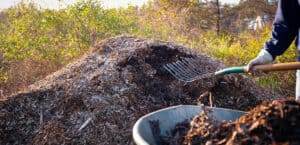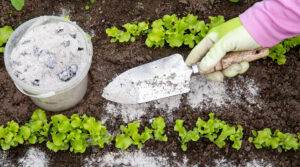Introduction
Wheatgrass is widely consumed as a superfood, health tonic, and dietary supplement. Grown for its impressive array of vitamins, minerals, enzymes, amino acids, and chlorophyll content, it is the young leaves of the wheat plant, Triticum aestivum.
It is commonly found as a shot at juice bars, as capsules, or in powder form as a supplement at natural food shops. Purported health benefits and curative properties are as innumerable as they are fantastic, bordering on magical.
It’s incredibly easy to grow with little supplies and skill required. Anybody seeking a natural, sustainable, and medicinal elixir would be remiss to overlook the advantages of growing your own wheatgrass at home.
Plant History & Origin
The origin of consuming raw wheatgrass can be traced back thousands of years. Ancient Mesopotamian and Egyptian civilizations regularly used wheatgrass as a purifying health food.
The Essenes, a religious sect that lived near the Dead Sea around the beginning of the common era proclaimed that wheatgrass was the perfect food for the human race. The holy book of the Essenes, The Gospel of Peace, was translated by Hungarian linguist and philosopher Edmond Bordeaux Szekely in 1923, claiming their principles of well-being and nutrition were taught to them by Jesus. In it were the pronouncements that the delicate nature of living food should not be destroyed by cooking and that all grasses are beneficial to man.
In the mid-1920s, an agricultural chemist named Charles Schnabel was searching for a substantial feed for his livestock. He observed major improvements in the health and production of his chickens after feeding them “immature wheat.” He continued studying this health phenomenon in the rest of his animals and even began feeding his family and neighbors powdered wheatgrass. His family, especially his children, were the picture of perfect health all while they regularly consumed the powdered grass.
Another major proponent of wheatgrass was Ann Wigmore. She cured herself of many serious ailments by drinking wheatgrass juice. She studied and experimented with many forms of grass as a healing supplement and found wheatgrass to be the most potent and beneficial. Ann went on to popularize wheatgrass juice by writing books, establishing living food protocols and founding a clinic in Boston. This clinic is now The Hippocrates Health Institute in Florida.
The consumption of wheatgrass juice and the inclusion of dehydrated powder in supplements continues to gain popularity in health food circles. Although funding for scientific study lacks, it is generally accepted as a superfood, beneficial for health.
Interesting Wheatgrass Facts
- One serving of wheatgrass juice is the equivalent of 1.5 pounds of dark leafy green vegetables.
- A liquid dose of juice is 1-4 ounces, dehydrated powder is 3-5 grams (teaspoon). It’s a good idea to start with a small dose and work your way up.
- Wheatgrass takes only 1 minute to digest!
- It is highly alkalizing and detoxifying due to its high chlorophyll content.
- The elevated oxygen content of wheatgrass makes it a great energy enhancer.
- Wheatgrass is gluten-free because it is harvested before the grain forms.
- The best benefits will be realized when taken on an empty stomach an hour before eating so nutrients can be completely absorbed.
- Some side effects that can occur are headache, upset stomach, constipation, nausea and irregular bowel movements. Depending on the toxicity of your body, symptoms should fade within 2 weeks.
- Best of all, wheatgrass is easy to grow right at home!
Medicinal Benefits of Wheatgrass
The best superfood
Wheatgrass, like most leafy greens, contains numerous vitamins and minerals (A, C, E, K, B complex, iron, calcium, and magnesium). What makes it truly stand out is the beneficial enzymes, 17 amino acids, proteins, and large amounts of chlorophyll.
Wheatgrass will detoxify the body
Research has shown that wheatgrass has the ability to help the body expel impurities and toxins. This improves liver function leading to deep cleansing and higher energy levels.
Wheatgrass is a valuable immune system booster
The essential vitamins, minerals, and enzymes keep the immune system in top shape, increasing the ability to ward off sickness.
Wheatgrass can speed up the metabolism and aid in weight loss
It has no calories or fat, but is very nutrient-dense, dulling cravings and leaving you feeling full for longer periods of time.
Wheatgrass can improve digestion
The high concentration of enzymes assist digestion by working to break down food and efficiently absorb nutrients. The cleaning of the intestines will relieve gas and bloating. Wheatgrass has been shown to cure constipation and IBS, among other digestive disorders.
Wheatgrass increases energy levels
A nourished and detoxified body can perform its normal tasks at a high level, making it easier to exercise and be more alert and active.
Wheatgrass enhances cognitive function
According to studies, wheatgrass may prevent and treat Alzheimer’s disease. Neuroprotective effects can also improve hand-eye coordination and prevent memory loss.
Wheatgrass alleviates the negative effects associated with diabetes
Wheatgrass has similar effects of insulin; it lowers the glycemic index of foods and has a positive impact on blood sugars.
Wheatgrass minimizes the risk of heart disease
Research has shown wheatgrass lowers cholesterol which correlates with heart disease prevention.
Wheatgrass relieves symptoms of arthritis
Studies have found that wheatgrass may have anti-inflammatory properties. This can lead to less stiffness, swelling and pain, minimizing discomfort and improving function.
Annual Growth Habit
Wheat is commercially cultivated as an annual crop that grows and matures over the course of a 110-130 day season. It is grown in order to harvest the seed that is marketed and consumed worldwide, by far the world’s most traded agricultural commodity. Wheatgrass is the freshly sprouted wheat seed that can be harvested in about 10 days after germination.
How To Propagate Wheatgrass
Wheatgrass can be propagated by sowing seed outdoors and letting it grow to maturity. Depending on region and climate, this can take about 3-4 months. Wheat stalks will grow vigorously without much maintenance, provided it receives enough water. In late summer, the grass sets seed, and leaves will become yellow and dry. Let it dry out completely before harvesting.
Ripe seed heads can be bunched and tied into small bundles. With pruning shears, cut 3 inches below the seed heads. Set the bunches upright in a sheltered area to let them dry for a week. The small bundles can then be beaten with the seed head facing downwards against the inside of a bucket or other container. Repeat the process with all of the bunches until all the seeds have dropped.
The seeds need to be winnowed next to remove the excess chaff. Using a wire mesh strainer, gently rub the seeds to remove the light outer hull encasing the seed. Shake the seeds in the strainer and let the breeze blow away the chaff.
The wheatgrass seeds can then be stored in a sealable container in a cool dry place. These seeds can be used to grow another full-sized crop of wheat to obtain more seeds, or used to grow crops of wheatgrass shoots for consumption.
How To Plant Wheatgrass
Seeds should be soaked for 4-8 hours before planting to start the sprouting process and increase the germination rate. Try to use seedling trays specially designed for microgreens. This will help keep the medium on the dryer side, discouraging mold, wheatgrass’ arch-nemesis. Two trays will be needed for each crop, one inside the other. The inner tray should have holes, or a mesh tray comes in handy here. Even if the trays aren’t ideal, a good crop can still be obtained, just don’t let the medium get too damp and be sure to provide good ventilation.
Fill your container with medium and tamp it down so there are no loose or uneven spots. Use about 450 grams (16 ounces or 1 pound) of seed (weight before soaking) for a standard 1020 nursery flat. Spread the soaked seeds over the surface of the medium and lightly press them in. Ideally, the seeds are densely planted, but without clumps or piles of seed. Water lightly or mist well and cover with an inverted tray, so as not to smother the seeds with weight or compression. This also creates a type of humidity dome and blocks out the light, giving seeds the darkness required to sprout. Germination should occur within 2-3 days, at which time the tray of sprouts is ready for the next phase of growth.
Soil Requirements
Wheatgrass will grow well in most types of media, as long as it’s loose and light. A standard potting soil or coconut coir both work fine. Some growers recommend a soil blended with compost and other amendments, but in reality, nothing fancy is required as wheatgrass will be ready for harvest in about 10 days.
Growing Tips
- Source your seeds from reputable seed companies and purchase those specifically for growing wheatgrass shoots. Typically the description will let you know the variety of seed is for juicing. Look for “Hard Winter Wheat” (Triticum aestivum).
- Wheatgrass can produce a second and even third crop following the initial harvest.
- Take note of the growing schedule and start a cycle of a few trays in different stages of growth. This way you’ll have a constant supply of fresh greens.
- When first starting to consume wheatgrass, begin with small doses. The heavy detoxification can lead to unpleasant side effects until the body becomes accustomed.
Growing Wheatgrass
Light and Water Requirements
After the blackout phase, wheatgrass sprouts are ready for light exposure and to be watered again. Set your tray under regular grow lights or into indirect sunlight, where they can be gradually hardened off to withstand full sun. Make sure trays get at least 8 hours of light per day.
Fertilization
Although some growers prefer to fertilize their wheatgrass lightly, it’s completely unnecessary, granted that the life cycle is so short.
Time Until Harvest
From soaking the seeds to harvest takes about 10 total days. That’s it!
Pest Management
Clean and sanitize your workspace and trays regularly to eliminate mold spores. While cleaning isn’t the most exciting chore, spending a little time towards prevention can save a lot of time, effort and money in the end. It’s not worth risking a mold breakout and losing entire trays of greens.
Hydrogen peroxide is a greens grower’s best friend. It’s cheap, natural, completely non-toxic and gets the job done. The perfect solution for preventing mold is 1 tablespoon of 3% food-grade hydrogen peroxide in 500 ml of water. Use a spray bottle to mist trays in between grows.
Overly damp medium and stagnant air will surely lead to the appearance of mold, so keep the air circulating at all times and give the right amount of water, not too much.
Harvesting Wheatgrass Microgreens
After 9-10 days of growth, a second blade of grass will emerge from the primary shoot. This is an indicator of maturity and the signal that it’s time to harvest. Grass will be about 6 inches tall at this point and can be cut just above soil level with a pair of sharp, clean scissors. Have a plan for your harvest, because taste and nutrition are at their peak immediately after cutting.
Consuming Wheatgrass
Juicing is by far the most popular way to take advantage of all the health benefits of wheatgrass. Juicers slowly crush the grass, delicately releasing its liquid. No heat is applied, and the integrity of the nutritional profile is kept intact.
Some people add wheatgrass to their smoothies using a blender. It’s an effective way to ingest some of the nutrients, albeit less efficient than juicing. Blenders rapidly chop the grass into tiny bits, oxidizing the chlorophyll and compromising the juice’s total nutrient content.
Wheatgrass can also be freeze-dried or dehydrated and ground into a powder. Of course, the process of pulverizing the dried grass minimizes some of the health benefits. Powders are used as supplements in capsule form or mixed into water or smoothies.
Consuming wheatgrass raw is not recommended, the fiber content is just too high for humans to digest properly. Therefore, drinking wheatgrass raw in juice form is the best way to be certain the body will absorb all of its nourishing vitamins, minerals, enzymes, chlorophyll, amino acids, and proteins.
Preserving & Storing Wheatgrass
If your batch of wheatgrass is too large to use up or is getting to be too mature, there are a few practical solutions to prevent crop loss.
Cut the grass and wrap it in a paper towel, and put it into a sealed container. Pop it in the fridge, where it will keep for about a week.
Drying your wheatgrass is another option. Spread the harvested grass onto baking sheets or trays and put them into a dehydrator or oven set to the lowest temperature. Turn over the wheatgrass every once in a while so that it all dries evenly. The dried grass will blend up easily in a coffee grinder. Put the powder into a sealed container and keep it in a cupboard, pantry or cabinet.
A Final Word
Whether the Essenes really declared wheatgrass the perfect food, or Ann Wigman truly cured herself of her many maladies by juicing wheatgrass may always be debated. But what can’t be denied is wheatgrass’ sustainability, ease of growth at home, and long list of miraculous wellness-enhancing properties.







